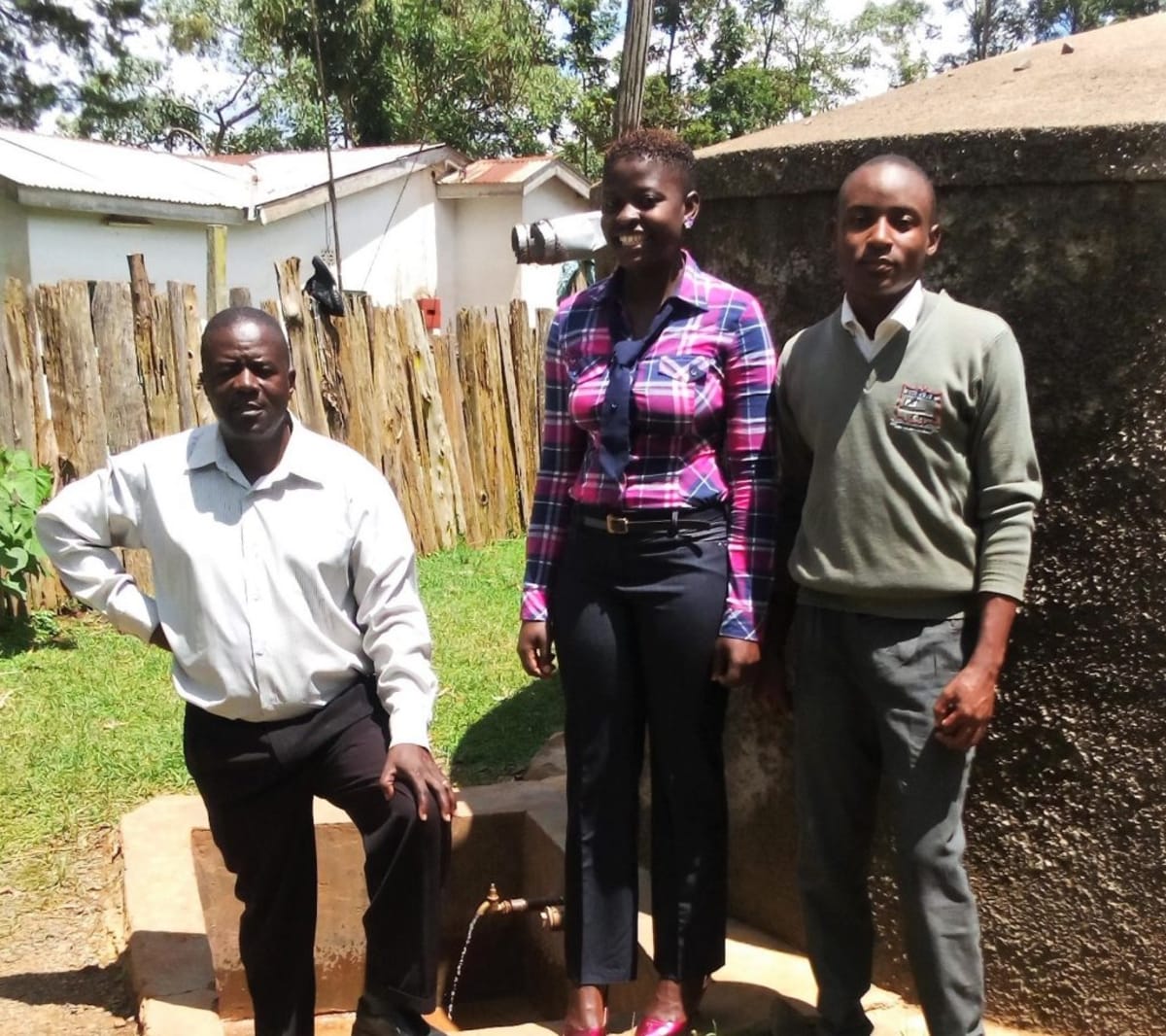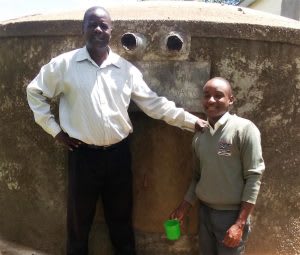This project is a part of our shared program with Western Water And Sanitation Forum (WEWASAFO). Our team is pleased to directly share the below report (edited for clarity, as needed).
Welcome to the School
Shieywe Secondary School was started in the year 1981 by Kakamega Mayor Mr. Robert Makotisi. He started the school with the intention of enabling pupils, especially boys, to get an education. Shieywe Secondary is located 3km away from Kakamega-Kisumu Highway in Shitao Village, Mahiakalo sub-location, Bukhungu location, Kakamega Central District of Lurambi Constituency within Kakamega County.
The school has a total population of 501 students of whom 362 are boys and 139 are girls. In regard of teaching staff, the school employs 26 teachers; 10 are male and 16 are female. There are also 11 support staff, which include two cooks, three watchmen, one groundsman, one cleaner, one bursar, a secretary, a storekeeper and a matron. (Editor’s Note: While this many people may have access on any given day, realistically a single water source can only support a population of 350-500 people. This school would be a good candidate for a second project in the future so adequate water is available. To learn more, click here.)
The pupils that attend Shieywe Secondary School wake up at 5am to take a bath, brush their teeth, and eat breakfast. Once prepared, they rush to school at 6:30am to arrive at school by 7am.
Their day at school starts with morning studies. Then at 8am, students and staff assemble for prayers and announcements from the head teacher. Classes proceed until 10:30am for when students have a short, 15-minute break. Classes go till 12:45pm, when students eat lunch.
Classes resume at 2pm and continue till 4pm when pupils break to clean up their classrooms and then play games. This continues till 5:00pm when they assemble for parade and then depart for home.
Water Situation
The school has unreliable tap water.
During lunch break, pupils can be seen lining up to wash their plates and get something to drink. In cases when there is no water, they have to keep dirty plates and wait until the school can purchase bottled water.
Water vendors come and go during classes in order to supply the school with sufficient water. The school has two 5,000-liter plastic rainwater catchment tanks, but even if they were full, they wouldn't provide the student population with enough water.
The school needs to buy water three times a week. They buy 200 20-liter jerrycans at 15 shillings each. This puts weekly spending at an average of 9,000 shillings, 36,000 in a month, and 108,000 in a term.
Numerous cases of water-related diseases have been reported, which are attributed to poor handling and storage of drinking water. The most common issues include dysentery, typhoid, stomachaches and cholera.
Sanitation Situation
The school sanitation situation also needs to be addressed as soon as possible. The school has a total number of 20 latrines, out of which six pits are almost full, leaving only 14 usable doors. Nine of these doors are for the boys and eight are for the girls, two doors for teachers and one door for support staff. Many students report urinary tract infections due to poor hygienic conditions.
The school has constructed two temporary hand-washing facilities that are used by staff. There are no hand-washing opportunities for students.
Garbage is deposited in a compost pit within the compound as seen in the pictures, though the pit is full and has started spilling over.
The school also has no drainage system, so the environment is often impassable after heavy rains.
Plans: Hygiene and Sanitation Training and Hand-Washing Stations
Training will be held for three days. The facilitator will use PHAST (participatory hygiene and sanitation transformation), ABCD (asset-based community development), CTC (child to child), lectures, group discussions, and handouts to teach health topics and ways to promote good practices within the school. The CTC method will prepare students to lead other students into healthy habits, as well as kickstart a CTC club for the school. This CTC club will oversee the new facilities, such as the hand-washing stations, and make sure they are kept clean and in working condition.
Plans: Rainwater Catchment Tank
A 30,000-liter rainwater catchment tank will be constructed on school grounds. Teachers, students, and parents will gather the local materials needed for this project, including sand, ballast, bricks, and hardcore. This contribution will fuel a sense of responsibility for the school and community to take care of their new facilities. Once materials are mobilized, the WEWASAFO team will arrive to lead the construction effort.
Plans: VIP Latrines
Two triple-door latrines will be constructed, providing three new latrines for each gender. Latrine materials will be mobilized the same way as the tank, ensuring the school feels these facilities are truly theirs.
Shieywe Secondary School believes that increased access to safe water will not only improve their sanitation and hygiene standards, but will also encourage improvement in overall academic performance.
The school will also save immense amounts of money that were previously wasted on buying water.

 Rainwater Catchment
Rainwater Catchment
 Rehabilitation Project
Rehabilitation Project























